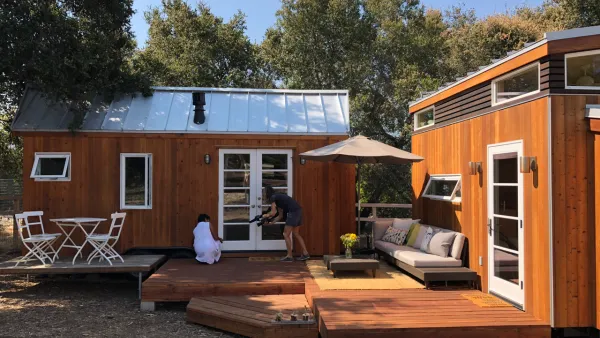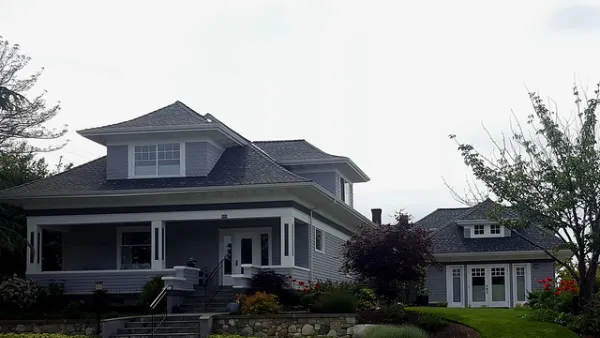Accessory Dwelling Units continue to gain steam as one approach for increasing affordability, but experts caution that housing affordability requires broader solutions.

Cities and states across the country are realizing the potential of legalized Accessory Dwelling Units (ADUs) as an inexpensive way to increase density and available housing units without drastically changing a neighborhood's character. According to Kol Peterson, author of Backdoor Revolution: The Definitive Guide to ADU Development, "there has been a dramatic uptick in ADU regulatory relaxation over the last few years." In a piece for the Washington Post, Haisten Willis assesses the benefits of ADU construction, which is experiencing a resurgence, particularly in high-cost, low-density neighborhoods on the West Coast.
California and Oregon have passed statewide legislation legalizing ADUs, and Chicago is implementing a pilot program to test the concept. Between 2016 and 2019, ADU permits in California jumped from 1,269 to 14,702, signaling a pent-up demand for "granny flats." Los Angeles, which issued 80 ADU permits in 2016, issued 6,747 in 2019.
The ADU can be an ideal housing type for seniors who want to live near their family and provides an unobtrusive way to increase available units, but advocates admit that "the devil is in the details" and more oversight is required to ensure ADU landlords can navigate the process and maintain adequate living conditions. "It still doesn’t absolve the city from the protections they need to keep for renters," says organizer Ebonée Green. Homeowners who want to build ADUs don't always know how to manage contractors or get permits, and banks, unfamiliar with the construction type, have so far been reluctant to issue loans for ADU projects.
While the growth in ADU construction is encouraging, experts warn that legalizing ADUs is only "a small tool in the box," not a broad solution to housing affordability issues.
FULL STORY: Accessory dwellings offer one solution to the affordable housing problem

Analysis: Cybertruck Fatality Rate Far Exceeds That of Ford Pinto
The Tesla Cybertruck was recalled seven times last year.

National Parks Layoffs Will Cause Communities to Lose Billions
Thousands of essential park workers were laid off this week, just before the busy spring break season.

Retro-silient?: America’s First “Eco-burb,” The Woodlands Turns 50
A master-planned community north of Houston offers lessons on green infrastructure and resilient design, but falls short of its founder’s lofty affordability and walkability goals.

Test News Post 1
This is a summary

Analysis: Cybertruck Fatality Rate Far Exceeds That of Ford Pinto
The Tesla Cybertruck was recalled seven times last year.

Test News Headline 46
Test for the image on the front page.
Urban Design for Planners 1: Software Tools
This six-course series explores essential urban design concepts using open source software and equips planners with the tools they need to participate fully in the urban design process.
Planning for Universal Design
Learn the tools for implementing Universal Design in planning regulations.
EMC Planning Group, Inc.
Planetizen
Planetizen
Mpact (formerly Rail~Volution)
Great Falls Development Authority, Inc.
HUDs Office of Policy Development and Research
NYU Wagner Graduate School of Public Service




























